Millennials And The Streetcar
Will it attract young professionals?
One of the claims critics make against the proposed Milwaukee Streetcar is that it won’t attract millennials. Does the evidence support this assertion?
As Urban Milwaukee editor Bruce Murphy has written, polling data and other research documents a remarkable resurgence in the popularity of urban living. One reason for this is that millenials—broadly defined as those entering the workforce after the year 2000–like the freedom and money saved by not having to depend on a car for transportation.
A Rockefeller Foundation poll of millenials in 10 cities found 54 percent said they would consider moving to another city that had more and better options for getting around. Two thirds included access to high quality transportation as one of the top three criteria for deciding where to live. 80 percent said it’s important to have a wide range of transportation options.
This shift represents an opportunity for cities and businesses who respond creatively to it. It also represents a threat to those who insist on doing things the same old way. The business landscape is littered with the bones of once-dominant companies who refused to change with the times.
The Cushman and Wakefield Global Business Group has issued a research report entitled Facing the Millennial Wave. The report is aimed at business leaders asking “How do we win the race for millennial talent?” The report discusses the shift from suburban to urban in where young people wish to live:
This residential shift has begun to affect the location choices of business, particularly in the post-recession years. While the suburban corporate campus gained favor as generations of talent relocated to suburbs, central cities have now emerged as the favored environments for businesses to invest and grow. Downtown locations are now viewed as the optimal and most dynamic option for many businesses – especially those in technology and creative industries.
The report offers examples of companies moving from suburban to more urban environments. For instance, a Chicago-based information technology company facing an upcoming lease renewal for its office space in a suburban submarket near multiple highways and upper income residential communities. The company concluded that a “downtown location maximized access to both the Millennial talent pool and existing employees (including the suburban-based upper management labor pool) via the region’s commuter rail system. Despite an increase in rental rates of over 30%, the company chose a downtown location to better position the company for growth in the highly competitive sector.”
The report added that even companies that didn’t make a full-scale move might open a downtown marketing or tech office to attract talent and leverage excitement. However, it cautions that “some central business districts will miss out on the resurgence of demand, particularly those lacking strong public transportation systems…”
The model developed by Cushman and Wakefield starts with the Nielsen company’s Prizm system which classifies people into one of 66 segments, under names like “Urban Dreams” (Upper middle, middle aged, family mix) or “Close in couples” (lower middle, older, mostly without kids). Nielsen then analyzes census data to get a picture of the mix of people by segments in each census tract. The Prizm system is used by marketers wishing to target people likely to be their customers.
Cushman uses three of the 66 segments, which they believe together capture the highly educated employees desired by its clients. (Strictly speaking only one of the segments is limited to people under 35; Nielsen describes the second as 25-44 and the third as under 55). It then searches out cities with neighborhoods having a high concentration of people in these three segments. For example the segments identified in the Milwaukee area have an average concentration of millennials that is 11 times that of the United States.
The map to the right shows what Cushman found in Milwaukee. No one following the changing demographics should be surprised by most of the findings. High concentrations of millennial households can be found in Bay View, Walker’s Point, parts of the East Side (Murray Hill), Shorewood, and Wauwatosa. More surprising, to me at least, was the concentration in West Allis.
The proposed streetcar is centrally located among the areas with high concentrations of Millennials. It seems well planned to enhance Milwaukee’s attractiveness to them and thus its attractiveness to companies dependent on hiring them.
When employees of Kodak invented the digital camera, management put its development on hold, fearing it would destroy the most profitable part of the business—the sale of photographic paper and supplies. At the time that seemed like the safe decision. In the end it destroyed the company.
Many of the critics of the streetcar decry it as too risky. I see not building it as the risky decision—a dagger aimed at the ability of Milwaukee to transform itself in response to a changing environment. Consider all the past decisions to keep transportation choices narrow: to kill the train to Madison, to kill light rail, to kill the train to Illinois through Racine and Kenosha, and the decision to reject the Talgo trainsets. The message running through all these decisions is that wanting alternatives to the car is illegitimate. Anyone wishing to live in a city with attributes of San Francisco (but cheaper) shouldn’t look to Wisconsin.
In evaluating the projected capital and operating costs of the Milwaukee streetcar, the Southeastern Wisconsin Regional Planning Commission compared it to six recently-constructed projects. With the exception of one in Seattle, all the projects (Atlanta, Cincinnati, Detroit, Kansas City, and Tucson) are in cities which the Rockefeller Foundation would call “aspiring” when it comes to public transportation. Unlike some of those others, the Milwaukee project seems remarkably safe financially, with funding through federal grants and tax incremental districts.
An obvious question, then, is what lies behind the intensity of the opposition to the streetcar. Particularly strange is that most of it seems to come from people who have no financial exposure whatsoever, those who live well beyond the Milwaukee city limits.
This would suggest that something more is going on—that opponents feel threatened by people who make different lifestyle choices than they do. They cannot imagine that anyone would forego the car and therefore try to use government to force others to make the same choices.
Although Groups like Citizens for Responsible Government and Americans for Prosperity like to talk about freedom and the free market, in practice they seem intent on using the government to force others to make decisions they would make. It is perhaps telling that, several days after it was announced, the AFP’s Streetcar Named Disaster link led to a site asking people to support right to work, another example of trying to use governmental power to control private decisions.
These opponents also claim the streetcar won’t attract young people, but all the evidence suggests the contrary.
Streetcar Renderings and Maps
Urban Milwaukee Streetcar Coverage
- Koch-Funded Group Backs Anti-Streetcar Drive – Bruce Murphy – January 20th, 2015
- Streetcar Backers Say They Have the Votes – Jeramey Jannene – January 20th, 2015
- Who is Funding the Anti-Streetcar Effort? – Bruce Murphy – January 20th, 2015
- Will Anti-Streetcar Referendum Succeed? – Bruce Murphy – January 9th, 2015
- The Story Behind the Streetcar Referendum – Michael Horne and Bruce Murphy – January 8th, 2015
- Council Delays Streetcar Until January – Jeramey Jannene – December 16th, 2014
- Committee Takes No Action on Streetcar – Jeramey Jannene – December 10th, 2014
- Committee Approves Milwaukee Streetcar – Jeramey Jannene – December 9th, 2014
- RACM Approves Tax Funding for Streetcar – Michael Horne – December 8th, 2014
- How to Sell the Streetcar – Michael Horne – November 28th, 2014
- Next Stops for the Streetcar – Michael Horne – November 24th, 2014
- Barrett Moving Forward with Streetcar – Jeramey Jannene – November 18th, 2014
- Who Will Be Streetcar Operator – Michael Horne – May 8th, 2014
- A Streetcar Named Cooperation? – Dave Reid – April 27th, 2014
- How a Streetcar Spurs Development – Angie Schmitt – November 3rd, 2013
- Streetcar Social – Michael Horne – September 12th, 2013
- Mayor Says Streetcar is a “Trojan Horse” – Michael Horne – April 17th, 2013
- Whoops, We Changed Our Mind – Dave Reid – September 27th, 2012
- Battle of the Bobs: Donovan vs Bauman Streetcar Press Conference – Jeramey Jannene – May 18th, 2012
- Important Hoan Bridge and Milwaukee Streetcar Meetings This Week – Dave Reid – November 14th, 2011
- Milwaukee Streetcar Passes Common Council – Jeramey Jannene – July 26th, 2011
- Keep the Milwaukee Streetcar Moving Forward – Jeramey Jannene – July 8th, 2011
- Milwaukee Streetcar at Apex – Jeramey Jannene – June 16th, 2011
- Milwaukee Streetcar Takes Key Step Forward – Jeramey Jannene – May 6th, 2010
- Milwaukee Streetcar Meeting This Thursday – Jeramey Jannene – October 5th, 2009
- Milwaukee Streetcar Routes Unveiled by Mayor Barrett – Jeramey Jannene – September 21st, 2009
- Milwaukee Streetcar Round-Up – Jeramey Jannene – April 19th, 2009
- Vote for your Favorite Milwaukee Streetcar Route – Jeramey Jannene – March 25th, 2009
- Design Your Own Streetcar Route – Jeramey Jannene – March 23rd, 2009
- Streetcars Coming to Milwaukee – Dave Reid – March 14th, 2009
More about the Milwaukee Streetcar
For more project details, including the project timeline, financing, route and possible extensions, see our extensive past coverage.
- Another Streetcar Collision - Jeramey Jannene - Jun 27th, 2025
- Streetcar Hit By Apparent Red Light Runner - Jeramey Jannene - Jun 16th, 2025
- Streetcar Will Run On Consolidated Route During Summerfest - Jeramey Jannene - Jun 11th, 2025
- City Hall: Milwaukee Must Replace Failing Streetcar Switches - Jeramey Jannene - Feb 24th, 2025
- Streetcar Confronts Limited Funding, Operations Challenges - Evan Casey - Jan 22nd, 2025
- Council Kills Streetcar’s ‘Festivals Line’ - Jeramey Jannene - Jul 31st, 2024
- Streetcar Will Use Festivals-Oriented Route Through Summer - Jeramey Jannene - Jul 9th, 2024
- The Hop’s Lines Will Merge For Easier Summerfest Service - Jeramey Jannene - May 30th, 2024
- Streetcar Begins Daily Service To The Couture, BRT Will Soon Follow - Jeramey Jannene - Apr 11th, 2024
- Milwaukee’s Three Streetcar Extensions Need Mayoral Direction - Jeramey Jannene - Nov 8th, 2023
Read more about Milwaukee Streetcar here
Data Wonk
-
Why Absentee Ballot Drop Boxes Are Now Legal
 Jul 17th, 2024 by Bruce Thompson
Jul 17th, 2024 by Bruce Thompson
-
The Imperial Legislature Is Shot Down
 Jul 10th, 2024 by Bruce Thompson
Jul 10th, 2024 by Bruce Thompson
-
Counting the Lies By Trump
 Jul 3rd, 2024 by Bruce Thompson
Jul 3rd, 2024 by Bruce Thompson

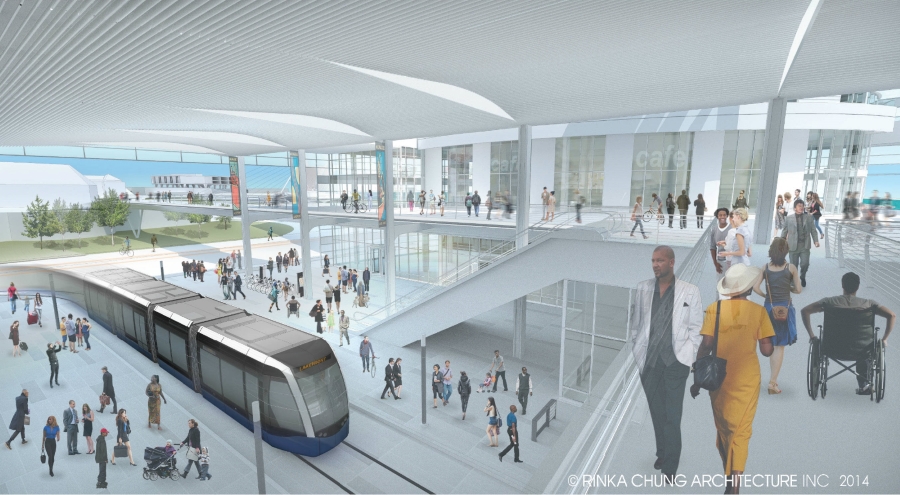
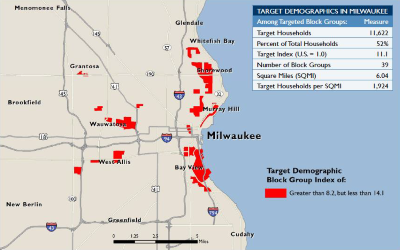
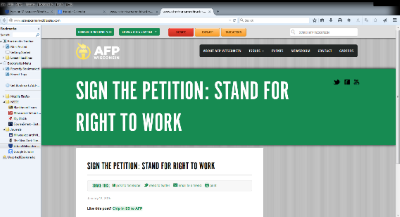
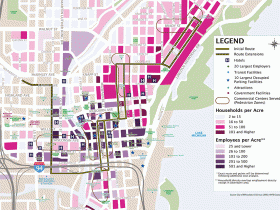
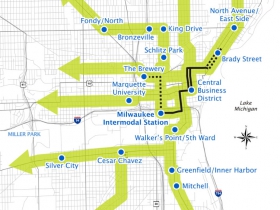
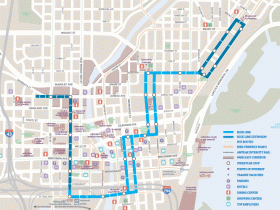
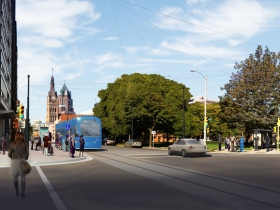
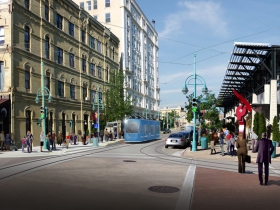
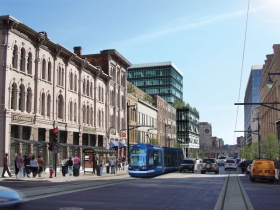




















I would argue that the anti-Milwaukee / Madison push is political. It is no secret that limiting and I would argue impeding both Milwaukee and Madison is right out of the conservative play book. The last thing Republuicans in this state want are healthy and influential big cities. Everyone knows that people in cities tend to be more reasonable, tolerant and centrist than those living in isolated rural areas. This would not bode well for republicans. Also, we all remember divide and conquer….. Demonize and villify Milwaukee and Madison. Fight every attempt to improve the cities and call them drains on the rest of the state. I do hope millenials stay here and have families, but that means they should not accept the status quo. They should demand changes rather than running away.
The demographics on that map are consistent with my experience. This may not be a popular political opinion, but essentially all of the attractive urban lifestyle elements are located along the shore–Starting in Bay View and up through Walker’s Point, Third Ward and the East Side.
At present, it’s difficult to move between these areas without driving. Bay View, with some of the better dining in the city, is particularly removed from the other areas. Efficient transit (top to bottom in less than an hour) connecting these neighborhoods would be an excellent way to attract young money looking to make a long term investment in the city.
BT, really liked this edition of Data Wonk. Only two minor, (admittedly) semi-off topic comments.
First, West Allis does not surprise me too much. West Allis is a place rich in affordable homes for those Millenials who want to dip into home ownership with a fairly inexpensive starter home.
Second, not sure why you added the right to work discussion on to this post when it seems like quite a contradictory situation. I see that case completely different. By not having right to work, you’re not giving people the right to choose for themselves whether they should pay union dues or not. Currently they have no choice and the current laws prevent them from doing so.
Otherwise, great article today.
AG, I put in the RTW part because I thought it was interesting that a link obstensively to an anti-streetcar petition led instead to one for RTW. But there could be more of a connection. One way opponents might try to kill the streetcar is to pass “right to ride” legislation that would make it illegal to require people to pay fares in order to ride a streetcar.
I got a chuckle from that response! But in all seriousness, I think the only connection, and reason the link exists, is because those topics share many of the same supporters and is a good way to reach that population with the old “two birds one stone” strategy.
Our next target is getting our good ol’ boy Walker to pass “Right to Live” legislation. It simultaneously adds a bounty DEAD OR ALIVE on anyone providing healthcare OF ANY KIND for women, while also making it your right to either pay taxes or keep that money for yourself. YOU DECIDE!
We dream of bringing the FREEDOM of Somalia to Wisconsin!!
As a young professional who is from, and used to live in Milwaukee, I support the streetcar and can only see opposing it if you’re in favor of a more robust system that connects the areas of Tosa, West Allis, Bay View, Murray Hill, and Shorewood with downtown. This could further be expanded west to Waukesha as well. Overall, I think the streetcar is good. However, the streetcar alone is not the answer, and I think that’s something we all know.
“An obvious question, then, is what lies behind the intensity of the opposition to the streetcar. Particularly strange is that most of it seems to come from people who have no financial exposure whatsoever, those who live well beyond the Milwaukee city limits”
I strongly disagree. Most in the inner city are very opposed to this project as it will not assist people who NEED transportation. Furthermore they are predominately democrats.
You cannot compare a City with a vibrant, thriving downtown like San Francisco or Chicago to Milwaukee.
If you are truly fair minded, why not let the citizens of Milwaukee vote on this project?
Janice did you poll inner city residents? How do you know that most are opposed?
I live in the inner city and belong to several organizations.
I work in the inner city and belong to several organizations. This is obviously a hotly debated topic and people are freely expressing their opinion.
It is sad that a person must be referred to as close minded or behind the times simply because they think this is a bad idea.
Why can’t this just be judged as a bad economic decision without being insulted?
This is a costly project serving areas in no need of public stimulus.
Janice, if you’re so concerned about the innercity, where have you been for the last 15 years as Walker, CRG and DOT took a knife to our bus system. A streetcar system is not designed for city like Chi, its designed for cities like Milwaukee. Btw, Milwaukee does have a vibrant urban core. We have a densley populated city, county and believe it or not, MSA. Actually Milwaukee is a much better candidate for a streetcar than cities like Indy, KC, Memphis, Atlanta and Dallas largly because of our density. We are much more densley populated rthan those cities.
A robust regional transit system would require regional cooperation. The state legislature passed a law outlawing regional authorities in SE WI. Maybe you should start with them. The DOT is recommending elimination of transit funding from the transportation budget – where is your outrage? Walker eliminated high speed rail, which could have allowed for express service to and from downtown. Again, its a false choice. Lets build our system from the inside out – its the only way.
@Jill, I agree. Why should I be called a racist because I believe its a good investment? Bob fro WCD, Joe Davis, Mary Glass, Citizens for Responsible Gov, Charlie Sykes, Jay Webber and Vicky Lawrence or whatever her name is have been calling supporters of the streetcar racists for two months now.
I don’t believe people are backwards if they don’t support the streetcar, I just don’t believe them when they suddenly love buses or want regional rail. This state is doing the opposite of just about every state in the countrt by actually cutting transit. That’s backwards.
I am just as outraged by the DOT recommendation.
The high speed rail line was proposed to travel from Milwaukee to Madison.
One more time:
Why deny people the vote?
We have elected officials that are in office to make decisions such as this. Furthermore, they have had sufficient time to gage the interest of their constituents. They’ve held numerous listening sessions etc. What else would you like to vote on Jill, park spending, budgets, school cuts? im sure there are a lot of things you hold sacred that would be shot down in a vote.
@Janice–
Get off of the tired “deny the vote” argument. You have a voice through your elected official. That’s how the system works — unless your elected official can’t actually vote on the streetcar, which wouldn’t surprise me one bit.
It would seem that based on that map a streetcar should be located in Shorewood, Bay View, West Allis or Wauwatosa as seemingly that’s where the millennials are. An interesting question is why are these millennials living in these pockets instead of downtown? I live in Wauwatosa and perhaps I missed the streetcar we have that is attracting all of us millennials to the area.
I guess the question is how does a streetcar built in the current location benefit the millennial living in West Allis or the other areas unless extensions are built to those areas and then were talking about a lot more money. To me this is why this debate has always been stupid because the supporters seem unwilling to talk about what they’d really like to do and how much it would cost.
Is the millennial in Wauwatosa going to come downtown more because there’s s street car? I would predict they may come down a little bit less because the parking is not exactly going to get better with a streetcar.
Bill, as people have noted repeatedly, you have to start somewhere. The plan is to expand the streetcar after Phase 1.
Yeah Janice, what’s wrong with you?!? We have elected officials to do our bidding. That’s why everyone on this forum recognizes and respects Scott Walker’s mandate to make decisions for the state.
@Bruce Thompson
You missed the point of my piece against the streetcar. I wasn’t saying that a streetcar, or transit in general, won’t attract millenials (although no-one seems up for even considering if that should be an important goal of the city). I was saying that this streetcar won’t. A common mistake of folks who don’t understand transit very well is to assume that proximity is the only factor in the success of a system. That’s not true. A system has to be useful to be attractive to millenials or anyone else. It has to be fast, frequent, and go somewhere as directly as possible. Streetcars can do that. There are examples all over Europe. This streetcar, like most new ones being built in the US, however, won’t.
@Jill
Hear, hear. I am tired of being called all number of things because I think this is a bad idea. I have frankly spent more time fighting for MCTS than any streetcar supporter I know of. I live in this city, I pay my taxes, I vote, and I deserve to be allowed to discuss the issues with this project. It’s a shame that the city leadership isn’t willing to discuss this project on its own merits without trying to bribe us with corporate offices, skyscrapers, or an outdated and disputed idea of millenials and the “creative class”.
Sam why won’t this streetcar, especially if it’s expanded beyond Phase 1, be useful or attractive?
@Rich “Yes Master, whatever you say Master”
@David I’m trying to stay on the issue at hand, why don’t you?
@PMD If the streetcar is the first step in the project, it will never progress to step 2. That is my main concern. If we make wise choices in the initial stages we can continue– if we don’t– it stalls the ENTIRE project with no hope of progressing.
@Sam Thank you. Your proximity argument is key to the project and I respect your right to state it.
David is right and makes a good case Janice. Your demand that he stay on the issue makes it seem like you miss the point entirely.
I too worry that Phase 2 won’t happen. It needs to. But that fear doesn’t mean it shouldn’t go forward. And I find it curious that you fear the cost of the streetcar so much but fully support light rail, something that would have cost a ton more than the streetcar.
Sometimes elected officials do not represent the people, but rather the special interests.
Reading your posts I guess I shouldn’t be surprised by your thought process. A mode of transportation that links one city another – by rail??? Have you ever heard of the bus system? Doesn’t cost an arm/leg, moveable routes, $2.25 per ride, rail cost is $1 for first year with $2 subsidy. How many are willing to pay $3? In case you haven’t figured it out, subsidities come from our taxes. I can think of a better way to use tax monies. How much equipment do you think you’re going to get for $124 million? It’s not going to provide the jobs you think it will. Bus system has over 1400 drivers, something you will NEVER see in streetcar. Streetcar breaks down, it stays there as it’s not easy to move a disabled train. Bus breaks down, tow truck. If you move to MIlwaukee because of a streetcar, I feel sorry for you. One question, why is Mayor Barrett & so many others afraid of putting this out for a referendum? Think with your pocket not with the thought that a train is “cool”.
So Janice/Jill, did you spend the last 4-5 years working diligently to elect anti-streetcar individuals to the Common Council?
Janice / Jill. How am I off topic? I am addressing your points. I do not believe that you care about transit, rather I believe your objective is to kill the streetcar. Once you do that you’ll disappear. We won’t see your posts again as the state continues its attack on public transit by further reducing the budget. We won’t see you arguing for regional cooperation so we can connec the poor people you pretend to care about to jobs within the metro area. We won’t see you argue that the state must allow us to form a regional authority so we can make regional cooperation possible. Btw Janice the state made it illegal to form an authority only in SE WI. Where’s your outrage Janice?!? We won’t see you criticize the Gov for killing high speed rail that would connect us with Chi, Madison and Mpls. Please just stop with the charade.
I’m not sure why the petitioners are limiting this to rail projects. Let’s put all major projects to a referendum! Should O’Donnell park be fixed? Should we stop City Hall from falling into the street? Should we plow the snow after each blizzard?
Binding referendums are not a good idea. It turns what should be a strategy decision into another election cycle full of half-truths and annoying ads. If you don’t like the vision for the city that the Mayor has, then vote him out. It’s not like his plan to put in a streetcar was a secret in 2012 when 70% of the city voted for him.
Agreed Kyle. Nice post. Donovan was railing against this in 2011 right (if not before)? Where were all these opponents then? Why didn’t they get organized and get signatures and all that if this is the worst idea they’ve ever heard?
Well, the truth comes out.
If I don’t agree with your point of view I will be personally attacked and called a liar. And you seem to have the supernatural ability to predict my future thoughts and actions.
So much for “tolerance” and “coexistence”
For your information I am not a Walker supporter. Nor am I a blind follower of Mr. Barrett.
I do not wish to kill the streetcar. My hopes were for a logical, well planned answer to our transportation problems, but I understand that phase one must be a success if we are to develop phase two. Simple as that. And I’m attacked for it.
I’m feel sorry for you. Life must be very shallow and unrewarding with such a closed mind.
Bruce, what a fascinating article. My comments are responses to some of the other comments as well.
The streetcar connects people with resources downtown. While you didn’t superimpose the route onto the target demographic map, one can still imagine how the route starts to tie lakefront communities (Lower East Side, Third Ward, Walker’s Point, and eventually Upper East Side and Bay View to Downtown. This is how Portland’s streetcar works. It facilitates an urban lifestyle that substitutes access to nearby urban resources for mobility to far flung suburban resources. Many Millennials “get” the attraction of this lifestyle. Some Boomers do too, but thank God for the next generation. It’s a fun, healthy and efficient way to live precisely because you don’t have to drive everywhere. And visitors to our city will love it too, because they can avoid renting a car, or can just park it once and enjoy wandering around between sports and arts venues, bars and restaurants, convention halls and universities, and hotels. Now the street car becomes economic development. Now that’s a city I want to visit and to live in!
The route has to start small and can’t serve everyone. Milwaukee has already looked at two large light rail transit lines. Please forgive the history lesson:
1. In the 1980’s a route between downtown and the Northwest Side running more or less parallel to Fond du Lac Ave. would’ve provided a great transportation resource: it would’ve served the African American community; and it would’ve provided a way to travel to and from downtown in a corridor that doesn’t have an expressway. Once you pass up the opportunity, it doesn’t come along so soon again. Learn from that mistake. Milwaukee could’ve been a national leader because its first rail line would’ve served a large African American population.
2. The light rail transit line in the East-West Corridor studied in the 1990’s would have run roughly parallel to I-94 between downtown and the Zoo Interchange. The Wis. Department of Transportation will spend literally billions building bigger interchanges and years arguing about double-decker expressways. Many of the trips in that corridor are relatively local. Light rail transit could have provided capacity to move people in those neighborhoods as well as commuters. (Planned extensions were added to serve UWM and the Fond du Lac Avenue as well, although doing so only complicated the discussion.) Under some of the currently proposed I-94 expansion options, access to the expressway will actually worsen, as well as the quality of life of the homeowners who will have expressway traffic right up against their property line. The opportunity for a balanced transportation solution that offered choices and mitigated the need for expressway expansion is gone.
The last component of rail planning in Milwaukee is the little downtown street car. And yet, the opponents are still complaining, calling for a referendum, rewriting rules for paying for utility relocation costs, pointing out where it doesn’t go, who it doesn’t serve. So much for a spirit of compromise! The opponents have already won the argument of how to spend state money. The state and federal governments have spent billions on bigger expressways, just in the last few years. It’s reasonable to seize this last opportunity to serve an important transportation need and the image of Milwaukee for a really reasonable cost for a transportation project.
@Janice…. Please…. So much for tolerance and coexistence??? What? Go back and read your posts. You seem to know that most innercity residence are against this project. How would you know that? Several posts made reference to the 2010 non binding referendum that says otherwise. You won’t respond to that. You also say you can’t compare Milwaukee to vibrant downtowns like Chi or San Francisco. I’m not sure what that means. However, posters have addressed the density issue and the fact that we have a very dense urban core. Denser than most cities and almost all cities that are developing or have built a streetcar/light rail. In fact, we’re designed well for streetcar. You also state that this project will not help the poor. Why won’t it help the poor? Do you believe the poor are underserved by transit? If so, how? Posters have addressed that the poor are not underserved by transit, rather they have been excluded to job centers within the region because certain communities will not allow for a comprehensive, region wide transit system that connects to Milwaukee. This is a policy issue supported by the stae legislatures. You also say that you don’t believe the starter system will work. Again you are very short on details. Why? What do you believe the starter system should accomplish? It has to start somewhere…. correct?
Finally you end your posts with why are we denying the vote. First of all….. who’s denying the vote? Your response to a poster that says that elected officials are in office to make difficult infrastructure decisions was “Sometimes elected officials do not represent the people, but rather the special interests.” Ok…. what special interests do you think the council members are working for? “And finally you seem to think that this question somehow allows not to engage in any meaningful debate.
I’m sorry if you’re offended Janice. I don’t have a closed mind, but I am frustrated.
@PMD
I explained pretty well why I think this is a bad starter route in the piece I wrote for Urban Milwaukee about a week ago. It’s the link Bruce references in the first sentence of this article.
@Michael et al
I’m confused. The argument about the earlier proposals is that since we weren’t able to build bigger lines that would have actually served minorities and the transit dependent, we need to build a line that will almost exclusively serve wealthier white folks?
@David
You must not ride MCTS very often if you think minorities are already well served by transit. It takes ages to get pretty much anywhere by bus in this county. A rapid streetcar or some sort of brt could easily start to fix that.
Sam, your contention that Millenials pick where to live based on education and employment and not public transit is just flat-out false. http://www.rockefellerfoundation.org/newsroom/access-public-transportation-top
Also, how do you know that there is high demand for transit along Wisconsin Ave. but not in the Third Ward?
I agree, bus trips take way too long. Will similar trips on the streetcar actually take longer?
@Sam….. My concern is not just with minorities, its with all populations that use public transportation. Yes, that includes rich white people and choice riders. I would love to see wealthy “white folks” use transit. This includes the 5.5 million visitors to downtown evry year. I believe that this part of our economy is very important and derserves to be supported. I do agree that it takes a long time to cover the county by bus. The overwhelming majority of bus trips are local and not usually across the county. With that said, I do believe MCTS serves the transit dependent pretty well in a loxcalized area whether it be from city neighborhoods to downtown, Mayfair, UWM, Bayshore, etc.
What we do not do well is support public transit at a regional and state level. There is no dedicated funding, the state outlawed any regional authority in SE WI and the DOT is requesting that all transit funding be taken out of the transportation budget. This is the real problem. Transit dependent city residents do not have access to many parts of our metro area to live or work and this is by design.
Where would we build this bus rapid transit? Would it go on our freeways? If so, what are the destinations? Would the state make allowances for the BRT in the new freeway construction? Would it just run down the middle of FDL Ave. and stop every six blocks? What is rapid streetcar? Where would it go?
@PMD
One survey from the Rockefeller Foundation does not a truth make. And that wasn’t actually my argument anyway. My point was that while the availability of useful transit makes an impact, it isn’t the only and main factor. And the survey you reference asks about high quality transportation options. I would argue that the streetcar as planned doesn’t meet the definition of that.
As far as demand goes, Sewrpc and Milwaukee County keep statistics on traffic counts and transit ridership. It’s public data. Ridership on a number of the Wisconsin Ave bus routes is much higher than ridership on the Green and 15 that serve the 3rd Ward. 3rd Ward folks might say they want transit, but the majority are currently driving instead of taking the buses that offer comparable service to the planned streetcar.
As far as trip times, check out some of the press about the Atlanta and Portland streetcars. Both are as slow or slower than local bus service and usually similar in speed to walking.
@David
I didn’t actually ever say we should build a BRT system. I just mentioned it as an option. Brt (or rail) could run in its own lanes on major cross-town streets, most of which are overbuilt. FDL Ave, Wisconsin, Farwell/Prospect, 27th, and National have all been studied as possible routes before and recommended as options. Rapid streetcar is streetcar technology with fewer stops, its own lanes or right of way, and signal priority. It combines the low cost of streetcars with the speed of light rail. Most cities in Europe have lines that fit this definition. The middle of Wisconsin Ave or Sherman Blvd would make excellent routes for a rapid streetcar. It could even run in its own lanes to UWM via Prospect and Farwell.
That’s one of countless surveys that show young people are extremely concerned with public transit. That’s old news Sam. It isn’t the only issue of importance, but it’s a main one and easily one of the most important.
I don’t think more people using a bus that travels on Wisconsin Ave. as opposed to a bus that goes through the Third Ward means that there is much higher streetcar demand on Wisconsin Ave. than the Third Ward.
The streetcar in Milwaukee will travel at the same speed as the ones in Atlanta and Portland?
@Sam. The second pahse of the streetcar will connect FDL, King Drive, WI Ave, Farwell and Prospect as well as the southside. Maybe there are plans or the rapid component can be considered at that time? This would make more sense as you get away from the densley packed downtown. Of the streets you mentioned I think FDL is the only over built corridor. That’s open for debate – I’m no expert. BRT was studied in the 1990s and rejected. I’m sure signal priority is a component of thecurrent plan.
It seems you are a supporter of the project but just disagree with the current alignment? Or you disagree with the costs?
Janice….. I am sorry. You don’t have to stop posting. I was frustrated. I’ll be better.
@Sam, thanks for the comment. Bruce points out why this line specifically would attract millennials: it connects the areas where the work/live/play with downtown, areas that continue to see tremendous investment and growth, benefiting the entire city. My comment made the point that other longer lines have been tried. So it makes sense to smart small. I’ve read your article against this proposal. What would you propose to improve Milwaukee’s public transit in a feasible way? By the way, I’ve bounced around in Milwaukee’s buses for most of my life. The system works and I give them the operator credit for doing a lot with a little, but from the rider’s perspective there is no comparison between a bus and a rail vehicle. Most tourists, for example, aren’t going to get on a bus.
@Michael. I agree that most tourists will not ride a bus. This is not only true for Milwaukee, but most tourists in Philly won’t hop on a bus either. This has been largely left out of the conversation or ignored when mentioned. This is a huge issue that should not be overlooked.
I wonder if Portland has any idea what percentage of streetcar riders are tourists?
My family and I moved to Milwaukee from San Francisco in August after we had a baby. It was in our list of potential cites to relocate to because I have family here. Other cities we were looking at were San Diego, Portland, and Austin. “Streetcar” was literally one of the criteria in our list to decide where to move to. Obviously, we weighted it lightly, and moved to Milwaukee despite the lack of public transit. In any case, I can vouch that having good public transit in the form of a streetcar or trolley (not busses) is a factor for a lot of people in their 20s and 30s. I admit that it probably has less to do with age though and more to do with values. Younger people tend to be more liberal and progressive, and maybe that’s why it seems like streetcars and improved public transit are “millennial issues”.
There seems to be a lot of new condo buildings going up around downtown Milwaukee. People obviously want to live in this area. Yet, Milwaukee does not feel like a dense urban area, and I think that’s because people don’t walk in the streets very often. Businesses can’t rely on foot traffic. And drivers definitely don’t yield to pedestrians. I sincerely think people my age would choose the streetcar over their personal car to commute whenever they can. You don’t have to worry about parking (either finding a spot on the street when you come home again or paying a meter at your destination), don’t have to worry about a designated driver, and you can read during the commute (or do anything other than pay attention to the road). It’s simply a lot more enjoyable, and it will get people outside and on the streets, which will build a stronger sense of community. I think Milwaukee will build it, and it will eventually be expanded to serve Summerfest, UWM, and Miller Park.
Thanks for the comments Leah. I agree with your points of view and hold this as another example that it’s true… even though transit and the streetcar are not the only factors attracting new residents, it does play a role. Although I take sharp offense at the idea that values has anything to do with liberal or progressive tendencies. Maybe priorities would be a better description?
Once again, I whole-heartedly agree with the idea that millennials want mass transportation; in fact, most studies show that not only do millennials want it, retiring baby-boomers want it also; as well as safe, affordable, walkable, urban neighborhoods. But this little theme-park ride for the well-to-do east-siders does not make the grade.
I’ve said before that spending this amount of money to improve safety and frequency on the current bus line would be fabulous. I get it, I get it, I get it, and I’ve gotten it from day one, that this money comes out of different pile and not transferable (people jump on this the minute I say the above, even tho I know it and understand it); it doesn’t negate the fact that this is stupid way to spend it, unless you think that somehow this will be a base for expanding a street-car/trolley system in the future; which I doubt. And again, as a mass transportation proponent (and a person who lived in DC and took mass trans all the time), mass trans options that run on the street in city traffic are a foolish way to spend money. They get caught in (or cause) traffic jams. Even busses that run on separate concrete ribbons away from the road-way make better sense.
So what’s it all down to? One of the things I hate about Milwaukee is the ridiculous ‘neediness” it has to see itself as a world class city. More bad business decisions have been made in this city so that people can thing they’re living ‘someplace’, than it can possibly afford. We got a baseball stadium shoved down our throats that cost twice as much as it should have and wasn’t in the best possible place for it; solely so Milwaukee dunder-heads wouldn’t feel like they were living in a second-class city. We’re about to get a basket-ball arena shoved down our throats for the same reason (when our current arena is fine and isn’t even filled anywhere near capacity for current games). This “Tooner-ville Trolley” is just more of the same (didn’t we build a tiny down-town market and steal the signage off of Pike Place in Seattle so we’d feel good?). The whole area is run by “Germans” that have backwards business ideas, take years to make a decision and then make it solely on cheapness, and won’t hire anybody over the age of 55 to do anything, and openly say it to your face.
You want Milwaukee to be a world-class city, fix everything in the above last sentence, cut property taxes in half, and start giving sweet-heart tax deals to modern cyber-businesses (not Wal-mart and minimum wage operations). The infrastructure already exists compared to a lot of places; even the cities ghettos have substantially built houses that can be restored. Get going on that and forget about these stupid micro-projects to make yourself feel better…
@Andy Umbo….. Wow Andy, I think you’re being a bit dramatic. You sound like one of those “Germans” you describe in your rant. Lighten up.
Hi David…
…I only wish I was a nutzed up raver! I’ve seen Milwaukee going backward for 30 years (and seen the best and they brightest leave out of every graduation class), one reason I don’t live there now. I started out wanting to help change, and years and years of watching the mistakes being made while other urban areas were growing, gives my statement the feeling of frustration is contains. The “neediness” is a real thing for Milwaukee, and why they always spend money and rush to put lipstick on that pig without changing the fundamental structure that will facilitate it really changing in ways others will find attractive. This trolley/light rail system is another of those minor cosmetic changes that function as a “feel-good” project, without impacting the real issues of the city: jobs for the middle class; safe frequent regular mass transportation; and serious property tax relief. It’s over for me, but doing stuff like this isn’t going to help the place for the 20-somethings…
@ Andy Umbo I agree with a couple of your points. Mass transit…… this system needs to be built and expanded throughout the region. People in the city need access to the jobs, schools and opportunities our area has to offer. The street car could be a game changer if embraced by the suburbs. Also, we do need property tax relief. But I believe this is a tax code issue that resides with the state. The state takes all income, sales and a portion of Milwaukee’s tax revenue leaving Milwaukee very few options. Our proprty tax is killing the city. The only way out is to increase density and values…… something the city believes can happen with a street car.
Finally, the region and state need to embrace Milwaukee. It’s not easy being a post industrial city in this country. Most people I know don’t care about the world class status you refer to, they’re just so tired of the constant bashing by the rest of the state and talk radio. Milwaukee loves the rest of the state, but it’s not the other way around.